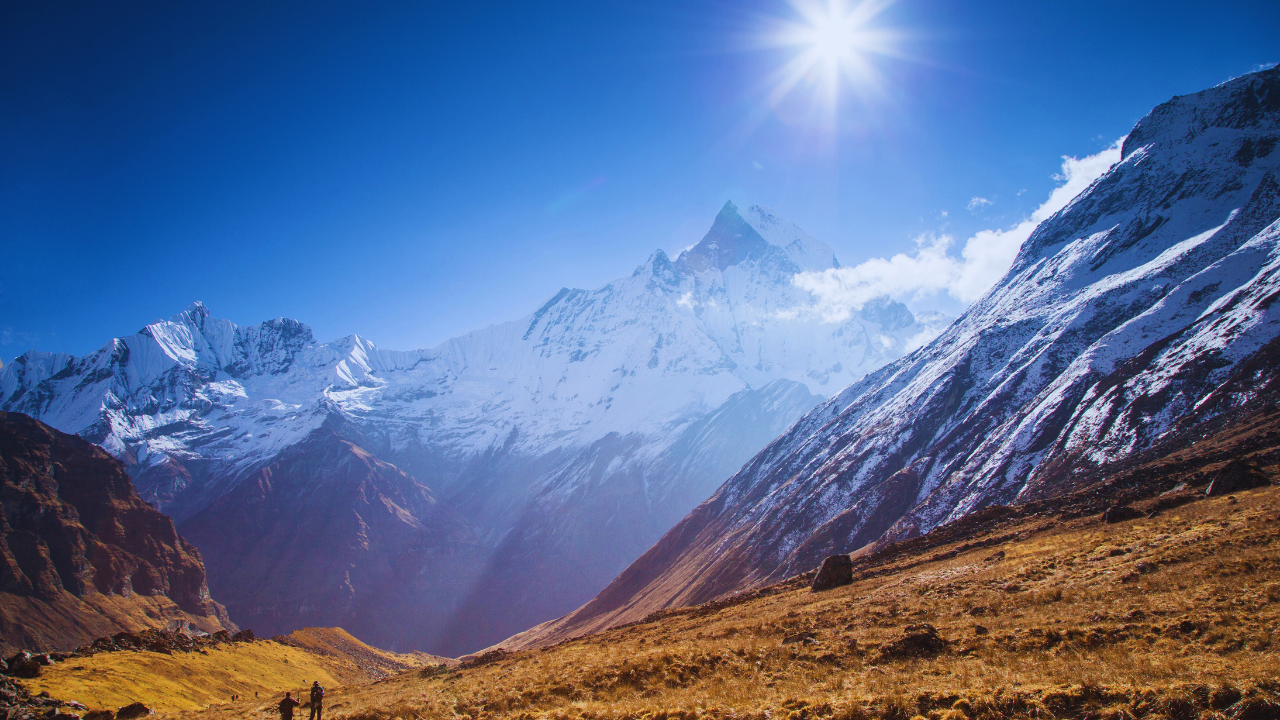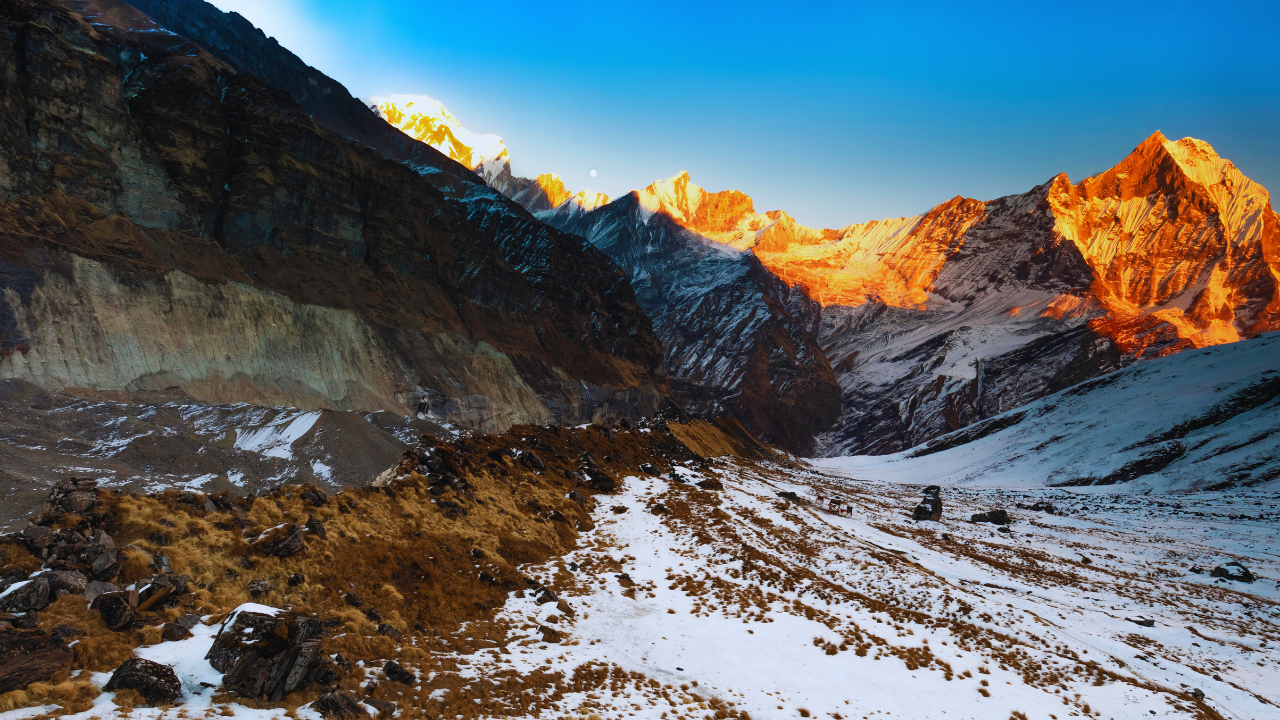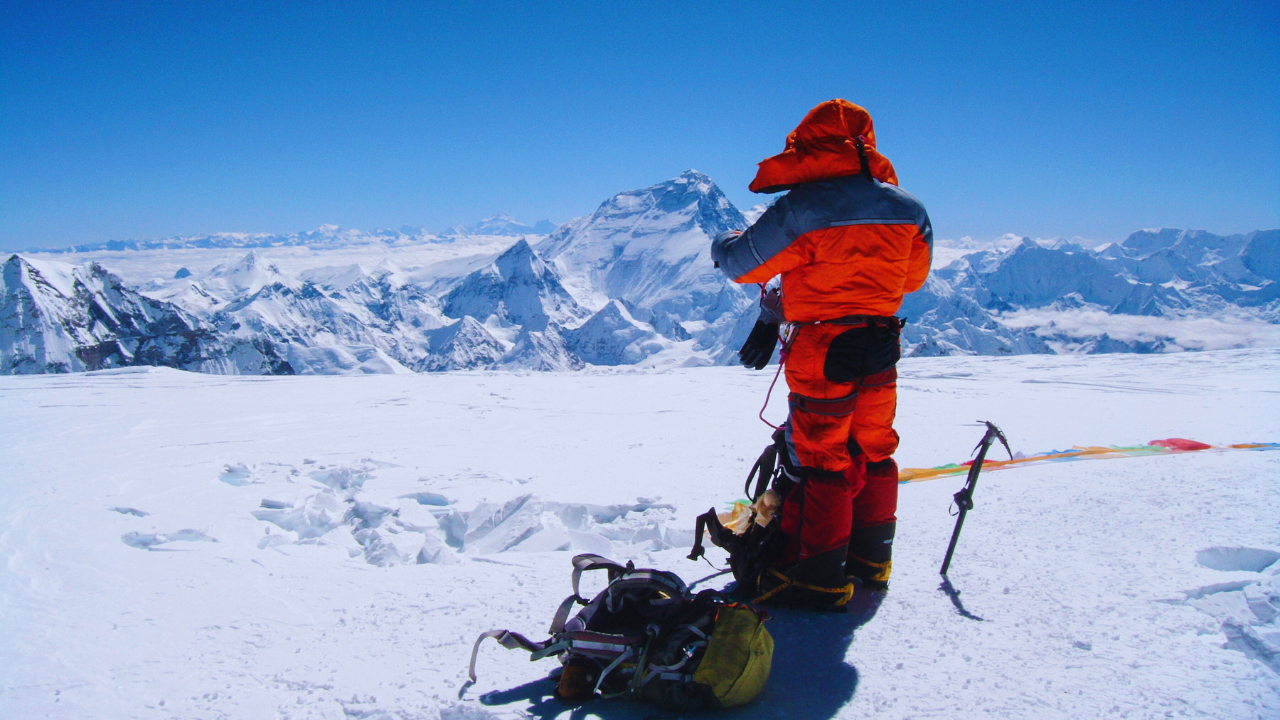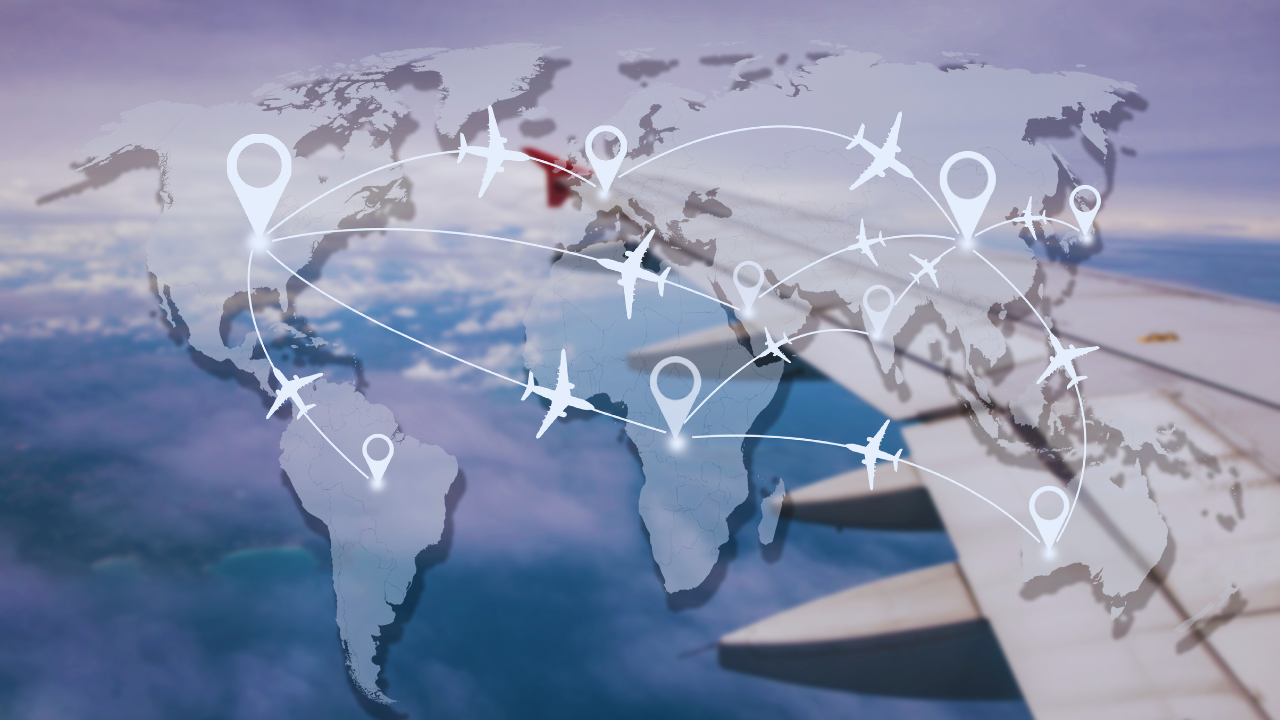The 14 Highest Mountains in the World
written on 10 Jul 2025
8
Minutes Read
There is some sort of attraction with some of the highest mountains in the world called "Eight-Thousanders," for they are more than 8,000 meters (26,247 feet) above sea level. These giants, located nearly entirely in the mountain ranges of Karakoram and Himalayas, are the ultimate test of strength, potential, and will in front of human beings. Apart from their scenic charm, they also comprise a wealth of knowledge about their geomorphological dominance as well as their high climbing history.
This blog talks about the details of these fourteen great mountains, such as a statistics-based consideration of their heights, where they are, their first ascents, and what they mean to anyone who will climb them.
Defining the Giants: The Eight-Thousanders Club
All 14 of the world's highest mountains are in Asia, among the great ranges of Karakoram and Himalayan. These ranges are there because of continuous collision between the Eurasian and Indian plates, a geologic process still forcing their colossal peaks upwards by several millimetres a year.
Being an “Eight-thousander” isn't merely a number, but also a mind-boggolly high elevation where there's little or no oxygen, or "the death zone" above 8,000 meters. It's here that your body literally falls apart, acclimatization and supplementary oxygen are a matter of life and death.
The Elite List: From Everest to Shishapangma
Let's look at all 14 of the world's highest mountains, their most noteworthy statistics, and some fun facts about them.
- Altitude: 8,848.86 m (29,031.7 ft)
- Where: Nepal/China border, Mahalangur Himal, Himalayas
- First Ascent: 29 May 1953, by Sir Edmund Hillary and Tenzing Norgay
Key Data:
- Uncontested "Roof of the World."
- Its Tibetan designation, Chomolungma, literally speaks of "Goddess Mother of the World"
- Its Sanskrit name, Sagarmatha, literally means "peak of heaven."
- Hillary and Norgay took the South Col route, which remains most popular.
- While in recent years there have been more than 10,000 records of ascent and their 3-4% mortality rate. The mountain's popularity has led to concerns about overcrowding on its routes.
2. K2 (Mount Godwin Austen / Chogori)
- Height: 8,611 metres (28,251 feet)
- Location: Pakistan/China border, Karakoram Range
- First Ascent: July 31, 1954, by Achille Compagnoni and Lino Lacedelli
Key Data:
- A major peak with a barbarous personality and many fatal casualties.
- As of August 2023, it had been reported that about 800 people had managed to climb K2, whereas 96 had lost their lives in the pursuit, which made it roughly a 12% fatality rate.
- Technically challenging than Everest, steeper and with even less dependable weather. First ascent during winter was graced by a Nepalese team in January 2021, which went a long way in proving the mountain's extreme winter challenges.
3. Kangchenjunga
- Altitude: 8,586 meters (28,169 feet)
- Where: Nepal-India border, Himalayas
- First Ascent: May 25, 1955, by Joe Brown and George Band
Key Data:
- Third highest, and in most climbers' estimations, just as hard as Nanga Parbat.
- It gets progressively harder towards the top, and there's hard rock climbing toward the upper levels.
- Requires the establishment of four camps above base camp.
- Known for its exposure to violent winds and avalanches.
4. Lhotse
- Elevation: 8,516 m (27,940 ft)
- Location: Nepal-China (Tibet) border, Mahalangur Himal, Himalayas (south of
- First Ascent: Fritz Luchsinger and Ernst Reiss, May 18, 1956
Key Data:
- Situated sitting on the South Col of Mount Everest.
- It shares somewhat of the climbing route to Everest, thus the mountain has gained the status of being a popular "add-on" for Everest climbers.
- Lhotse Face rises up steep and appears as a blue ice wall that is not under the easy category of technical climbing.
- Death count varies from year to year, but nonetheless, it is unsafe to climb there because of great altitudes and ever-changing weather.
5. Makalu
- Height: 8,485 meters (27,838 feet)
- Location: Nepal-China border, Mahalangur Himal, Himalayas
- First Ascent: 15 May 1955, by Lionel Terray and Jean Couzy
Key Data:
- The unique near-perfect pyramidal peak.
- Regarded as one of the technically hardest 8,000-peak mountains.
- A historical consensus puts the summit success rate around 34%, attesting to its challenge.
- It is cited for its exposed route, members of the party being walloped by high winds almost regularly, and the hazards of avalanches and rockfalls.
6. Cho Oyu
- Altitude: 8,201 metres (26,906 feet)
- Location: Nepal/China border (Tibet), Mahalangur range, Himalayas (west of Mount Everest)
- First Ascent: October 19, 1954, Herbert Tichy, Sepp Jöchler, and Pasang Dawa Lama
Key Data:
- Traditionally, it is considered one of the relatively easier ones, as it has more gradual inclines and less technicality on the normal route.
- This less intimidating status, indeed, makes it a magnet for climbers attempting their first 8,000-meter ascent.
- The weather is somewhat stable in September-October-peak post-monsoon season.
- It requires prior experience in high-altitude climbing. They should have done at least two 6,000-meter climbs and one 7,000-meter climb at their very least.
7. Dhaulagiri I
- Height: 8,167 meters (26,795 feet)
- Location: Dhaulagiri Himal, Himalayas
- First Ascent: May 13, 1960, by Kurt Diemberger, Peter Diener, Ernst Forrer, Albin Schelbert, Nawang Dorje, and Nyima Dorje
Key Data:
- Is called "Great White Mountain" and comes from Sanskrit.
- Rises steeply to over 7,000 meters above Kali Gandaki Valley.
- "Normal Route" is the most-used route on Northeast Ridge.
- While historically a "stiff" climb, its death rate has been slowly decreasing.
- The route includes technical sections and avalanche danger.
8. Manaslu
- Altitude: 8,163 meters (26,781 feet)
- Location: Nepal, Mansiri Himal, Himalayas
- First ascent: 9 May 1956 by Toshio Imanishi and Gyalzen Norbu
Key Data:
- Renowned as "Mountain of the Spirit."
- Its broad ridges and glacially covered valleys have easy passes towards all directions.
- Up to May 2008, the mountain has been ascended 297 times, resulting in 53 fatalities and a fatality rate of about 15%.
- Its most difficult climbing route lies on its south face.
- Has seen recent avalanche events, notably in 2012 and 2022.
9. Nanga Parbat
- Altitude: 8,126 meters (26,660 feet)
- Location: Western Himalayas, Pakistan
- First Ascent: July 3, 1953, by Hermann Buhl
Key Data:
- Nicknamed "Killer Mountain" because it had a high mortality rate throughout history.
- Features Rupal Face with a height of 4,600 meters, Earth's tallest free face.
- There's also the Diamir Face, which has the most-traveled ascent route, that of Kinshofer.
- Typically recognized for its hazardous weather and avalanche risks.
- Altitude: 8,091 meters (26,545 feet)
- Location: Nepal, Annapurna Massif, Himalayas
- First Ascent: June 3, 1950, Maurice Herzog, Louis Lachenal
Key Data:
- The first 8,000-meter peak ever successfully summited.
- Ranked amongst the most perilous mountains to ascend globally based on technical difficulty, unreliable climate, and very high rate of fatality.
- Its south face ascends 3,000 meters straight up in unstable icefalls and high-avalanche-frequency ground, and constitutes one of Earth's most challenging ascents.
- It has a high mortality rate compared to all other 8,000-metre mountains.
11. Gasherbrum I (Hidden Peak)
- Altitude: 8,080 meters (26,510 feet)
- Location: Karakoram Range, Pakistan-China border
- First Ascent: 5 July, 1958, Andy Kauffman, Pet Schoening
Key Data:
- Originally surveyed as K5.
- One of the "least sought" of all 8,000m peaks, fewer than 200 ascents to date by most recent estimates.
- Its relatively few ascents also have a low rate of dying, most likely because only highly experienced alpinists will attempt it.
- One of the popular routes is the "Japanese Couloir" on the northwest face.
- First winter ascent made in 2012 by a Polish team.
12. Broad Peak
- Altitude: 8,051 metres (26,414 feet)
- Location: Pakistan/China border, Karakoram Range (near K2)
- First Ascent: June 8-9, 1957, by Austrian expedition (Hermann Buhl, Kurt Diemberger, Marcus Schmuck, Fritz Wintersteller)
Key Data:
- Named for its kilometer-long summit ridge.
- Several peaks, one of them being highest, 8,051m.
- Has accounted for at least 29 deaths, with the death toll increasing since 1990.
- Its most commonly climbed route, the West Ridge, climbs steeply above.
- First winter ascent: 2013, by a Polish expedition, but two of them got lost during descent.
13. Gasherbrum II
- Altitude: 8,035 meters (26,362 feet)
- Location: Pakistan/China border, Karakoram Range
- First Ascent: July 7, 1956, Fritz Moravec, Josef Larch, and Hans Willenpart
Key Data:
- Thought by most to be one of the "safest" and most "convenient" of Karakoram 8,000-meter peaks due to its relatively easy climb.
- Southwest Ridge is the standard route.
- Known for speedy climb in 1986 by a party of Slovenes (32 hours base camp to top) and solo speed climb in 1997 by Anatoli Boukreev (ABC to summit in 9 hours 30 minutes).
- First winter climb in 2011.
14. Shishapangma
- Altitude: 8,027 meters (26,335 feet)
- Location: China, Tibet (Langtang Himal, Himalayas)
- First Ascent: 2 May 1964, by Chinese team led by Xu Jing
Key Data:
- The sole 8,000-meter mountain wholly situated in China.
- Two distinct major summits: Central/False Summit (8,013m) and Main Summit (8,027m)
- Main and central summit are connected by a ridge walk that's technical and exposed, hence most commercial expeditions treat central summit as their objective.
- Climbing from Camp 3 to the true peak is most laborious and time consuming aspect of the expedition, typically consuming 15-20 hours round trip.
The Indomitable Challenge: Beyond the Numbers
Statistics provide numeric truths about those mountains and are just one part of the story. Out there, in that high-altitude space, lies the bitter reality with the unpredictability of that establishment:
- Extreme Weather: Sudden temperature changes; fast snowstorms and winds with hurricane velocity are very typical.
- Altitude sickness: Oxygen-Deficiency can cause very severe HAPE and HACE with high mortalities.
- Technical Challenges: Steep ice walls, unstable rockfalls, hidden crevasses, and exposed ridges-very poor technical considerations.
- Avalanche: They are very real hazards and often deadly, most notably on snow-covered slopes.
The 14 highest mountains in the world are so much more than natural features. They are, in essence, monuments to human aspiration and effort. Each of those summits speaks of training for hours, lots of planning, and often very deep personal sacrifice. As mountaineering technology races on and more climbers aspire to stand atop these giants, the data continues to change and reflect the human endeavour in trying to find out and stretch their boundaries of what is possible.















































Comments